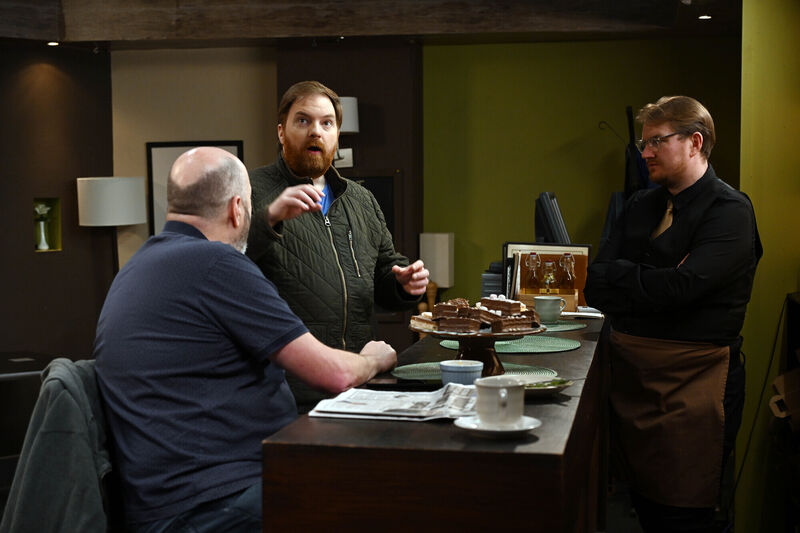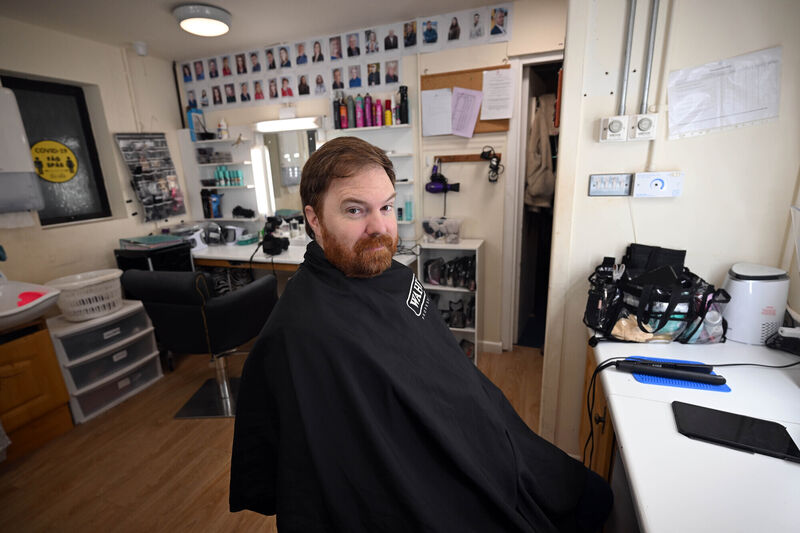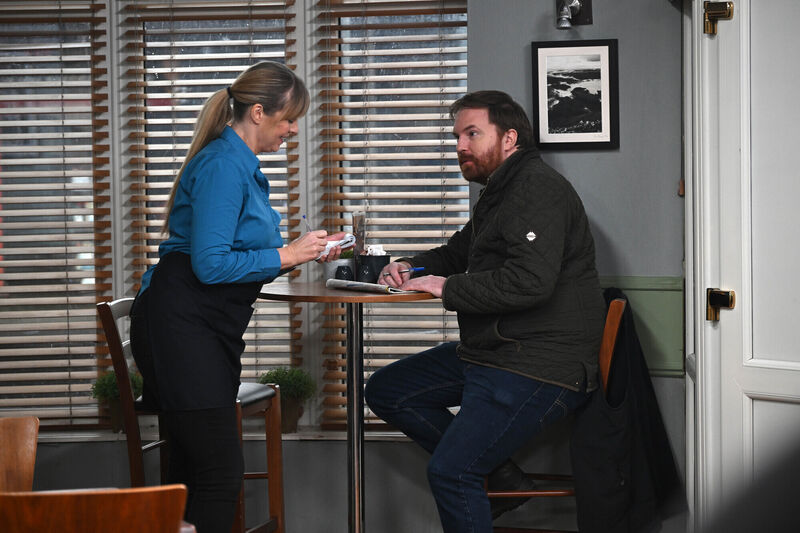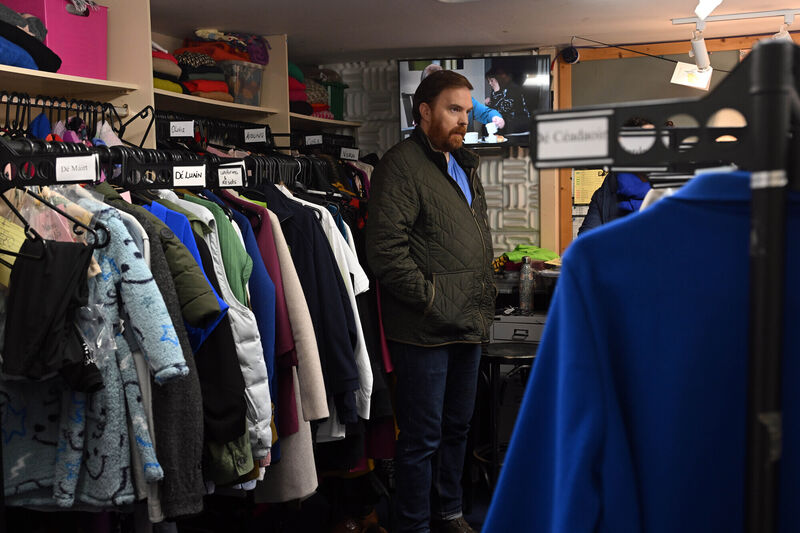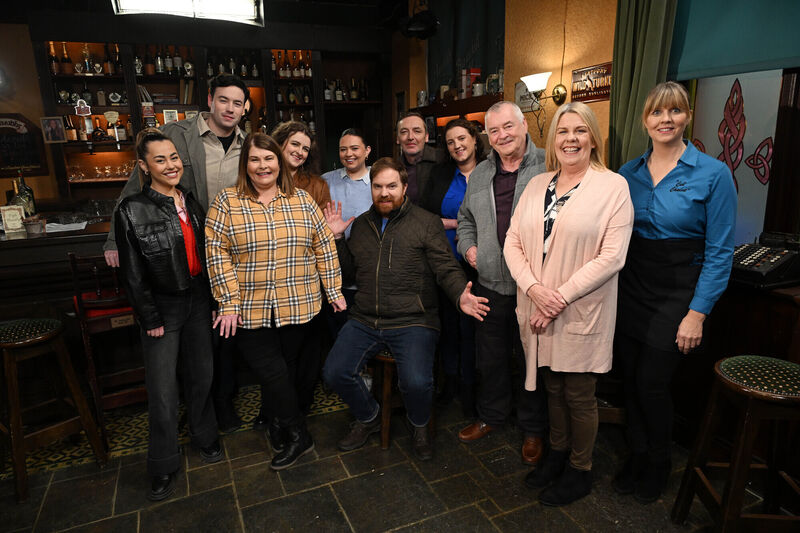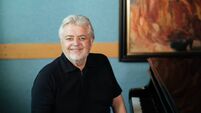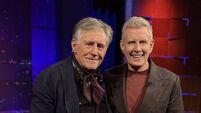I’m not a gaeilgeoir but I spent a day as an extra on Ros na Rún — here's how I got on
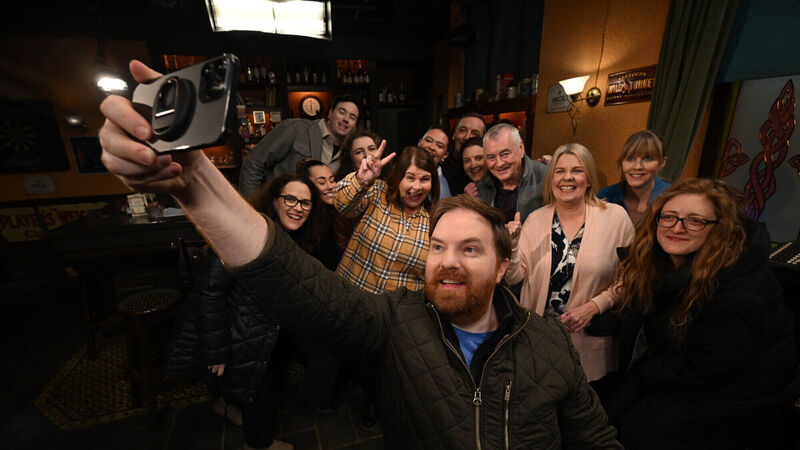
Bernard O’Shea on the Ros na Rún TV set with cast and crew. Pictures: Ray Ryan
When I was first asked to visit the set of , I pictured myself striding in with the confidence of a seasoned TV veteran — getting my makeup done, chatting effortlessly in Irish, and delivering an unforgettable turn as “Man Casually Sitting in Café”. My brain was in for a serious Modh Coinníollach-induced meltdown, as I quickly realised my school Irish was about to be tested.
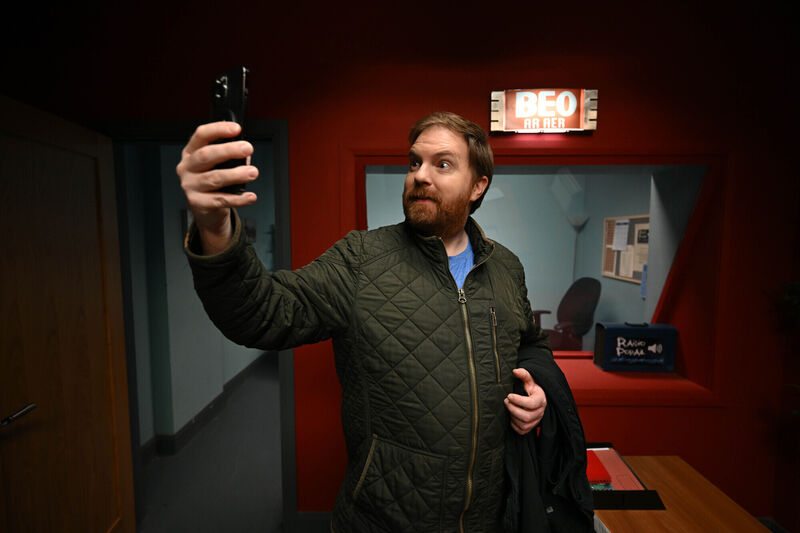
Over the years, has had its fair share of unexpected celebrity visitors. Some of Ireland’s biggest stars — and a few international ones —have graced its fictional village.
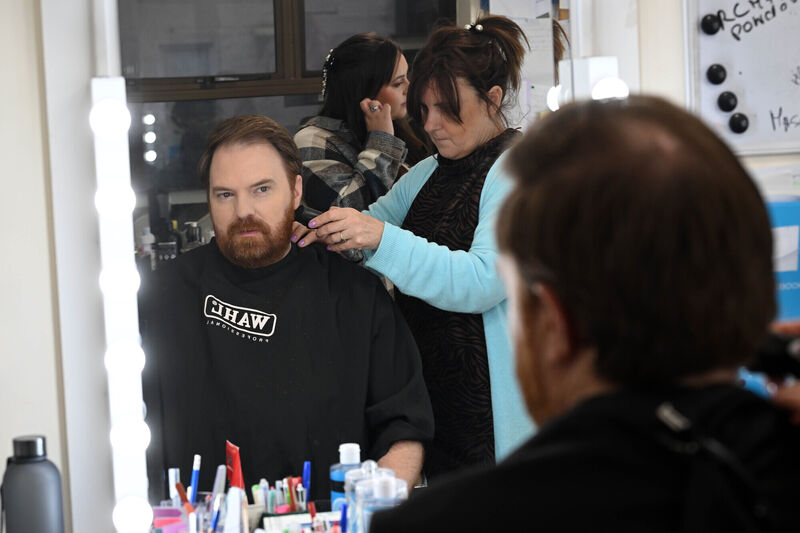
Of course, in my mind, I started imagining what role I would have played if I had shared a scene with Conan. Would I be his long-lost Irish cousin? His bumbling sidekick? More likely, I’d be “Man Carrying Groceries in Background”.
For those wondering whether a TV set looks as authentic in real life as it does on screen, the answer is both yes and no. Tigh Thaidhg, the legendary pub, looks exactly as it does on TV — except it doesn’t serve pints (a devastating discovery). The village shop is fully stocked, but you quickly realise some of its products are permanent fixtures, frozen in time. The café? Almost exactly the same as your local cafe, except there’s an entire film crew in it. It’s a world where reality and illusion exist side by side, and one day, I was about to enter it.
